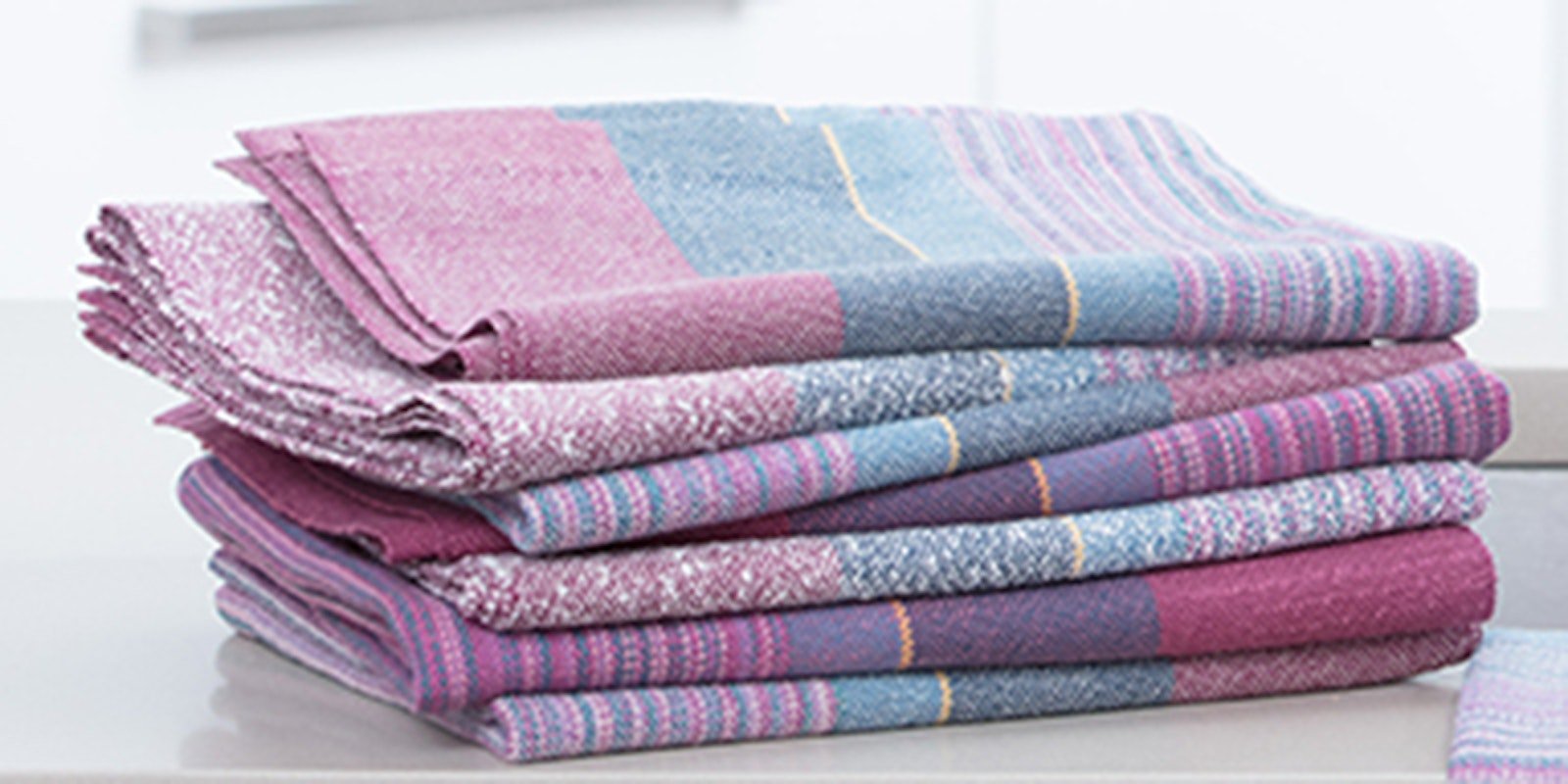When people meet me for the first time and find out I’m a weaver quite often the response is “Oh, you’re a weaver! You must be so patient!” This reaction always makes me squirm a bit because if there is one thing that I am not, it’s patient!
I think people confuse being willing to do something time consuming with patience. In reality, you don’t need patience for something that you enjoy doing. And I do enjoy every aspect of weaving, from designing the project, to winding the warp, threading, sleying, tieing on, right down to the pick-by-pick laying in of the weft in order to create a unique textile. But I'm not willing to do any of those steps inefficiently.
When I chose weaving as a career, I knew as much about weaving as most young people know about their chosen career path--in other words, not a whole lot. What I did know was that I needed work that had an element of creativity in it, and it would be great if I could be the one in charge. I felt that I could study the creation of textiles for the rest of my life and not know everything there was to know about the craft.After 35 plus years of weaving, I can say that I still learn new things about fibers and interlacing threads all the time.
Since choosing weaving as a career meant that I had to earn money, I knew right from the beginning that I was going to have to become efficient at doing all those steps involved in bringing order from chaos. It was also apparent that weaving was physically demanding and that repetitive stress injuries would be a real concern so it was imperative that I learn how to get the maximum output for minimum input.
As I learned how to weave I spent a lot of time analyzing the motions and figuring out how to do the processes with the least amount of physical effort. How to hold my hands, how to sit at the loom, which tools worked the best for me and so on. I did time studies – not so that I knew when to quit working, but to judge how much better I was getting at doing the various tasks and focusing in on where I needed to improve.
Handweaving will always be slow in comparison to industrial weaving but I felt that there was no need to do it slower than necessary by using poor techniques or inefficient equipment. I took as many workshops from as many different instructors as I could afford. Most of them had little hints and tips to make things go more smoothly. I eagerly latched on to them if they felt right for my body and approach to weaving.
Other weavers began noticing my productivity. Some of them were interested in how I do what I do. Others were not interested in ‘hurrying’. But I never hurry. Being in a hurry is generally not productive. Being in a hurry is when I tend to make mistakes because I am trying to take short cuts, or suspend judgment. Hurrying and making mistakes is counterproductive to being efficient. Speed without accuracy is not efficient.
Over the years I’ve formulated a few ‘rules’ of weaving one of which is “If you can’t be perfect, be consistent.” The more consistent you are the fewer mistakes you will make and the closer to perfection you will come.
As I travel around the country giving workshops I offer to demo how I weave. New weavers are most interested in what I do because they haven’t formed habits yet and are open to learning a different way to do something. Once muscle memory develops it’s much harder to change what you are doing. When I learn something new – most recently a new way to sley the reed – I give myself 7 warps to unlearn the old muscle memory and set the new technique as the new default.

Silk wall of Troy scarf designed by Laura Fry from Loom Theory 2018. Photo by Caleb Young
I routinely share what I’m doing on my blog. I’ve also loaded video clips on You Tube showing parts of the weaving process – from winding the warp, to winding bobbins/pirns/quills, threading, weaving.
What I do is no secret. People have been weaving for thousands of years. Precisely what you do will depend on a number of factors. The cloth you want to make, the tools you have available to you and your physical skill set will all affect the processes that you choose to use. If you, like me, are impatient it’s nice to know that the various tasks involved in weaving don’t have to take a longer time than necessary and that there are more efficient ways to work.
Ultimately, however, what one does will depend on how one likes to work. We just have to find out what makes us happy and do it.
Laura
Published December 15, 2015 Revised September 13, 2021

